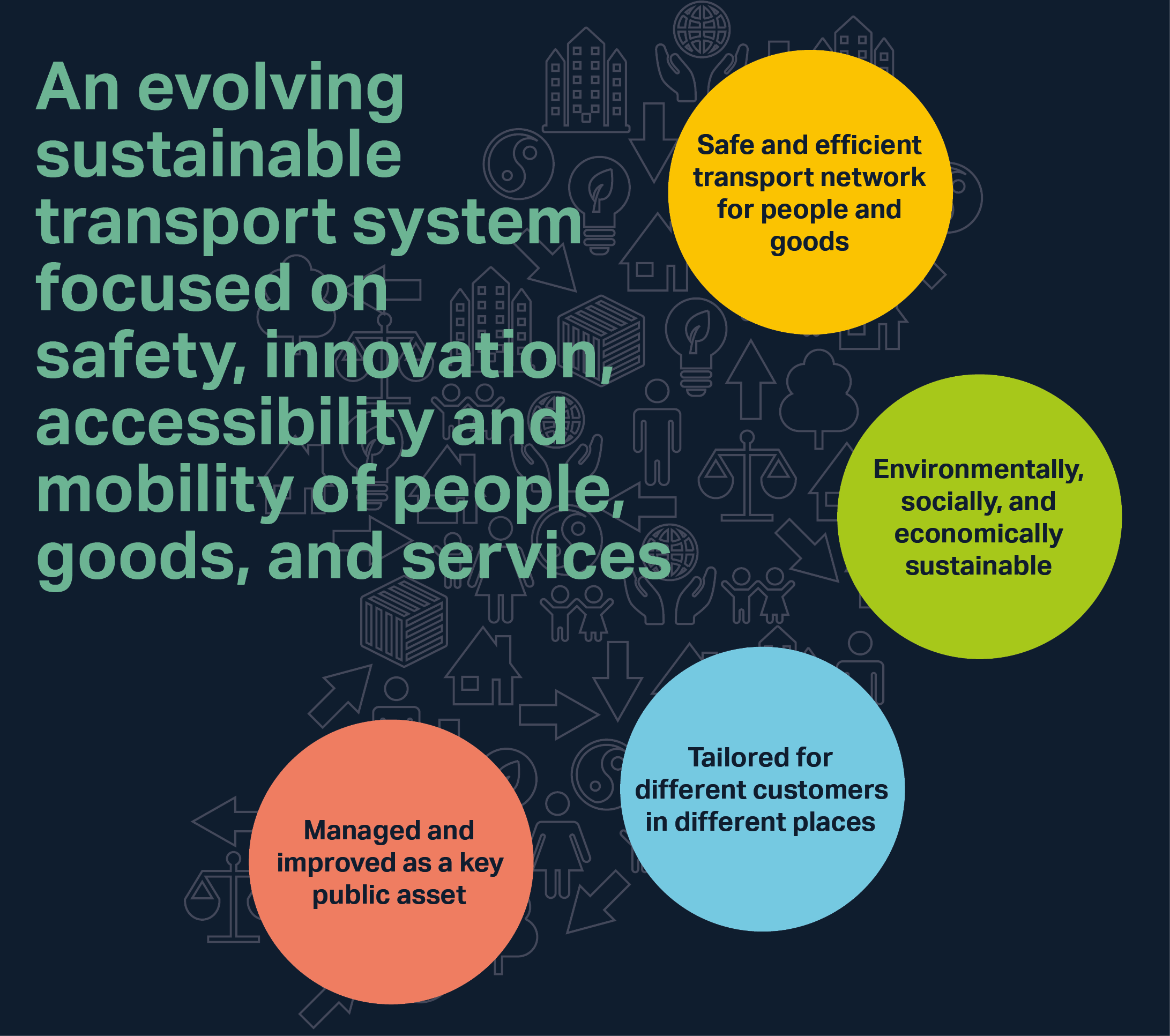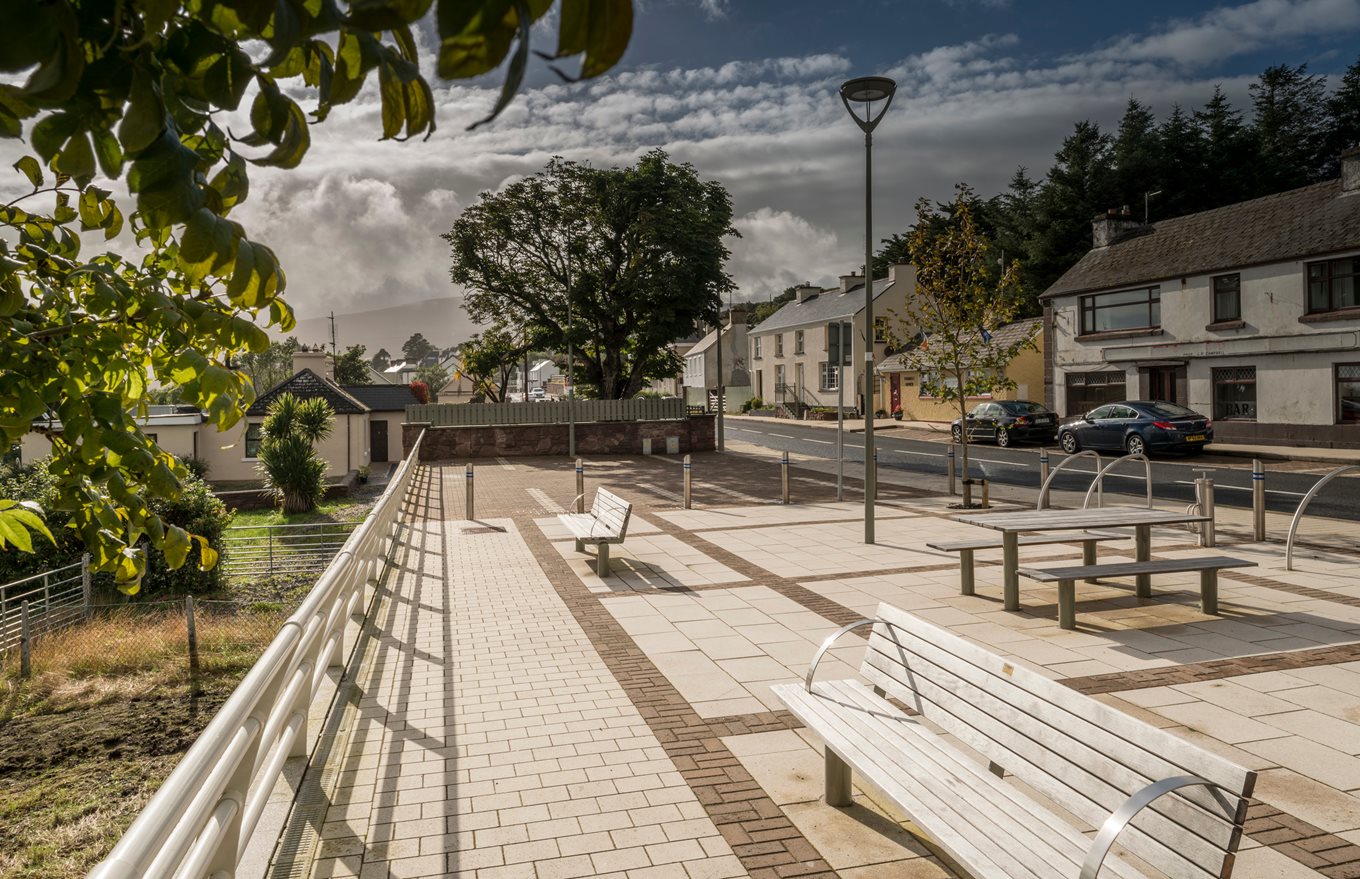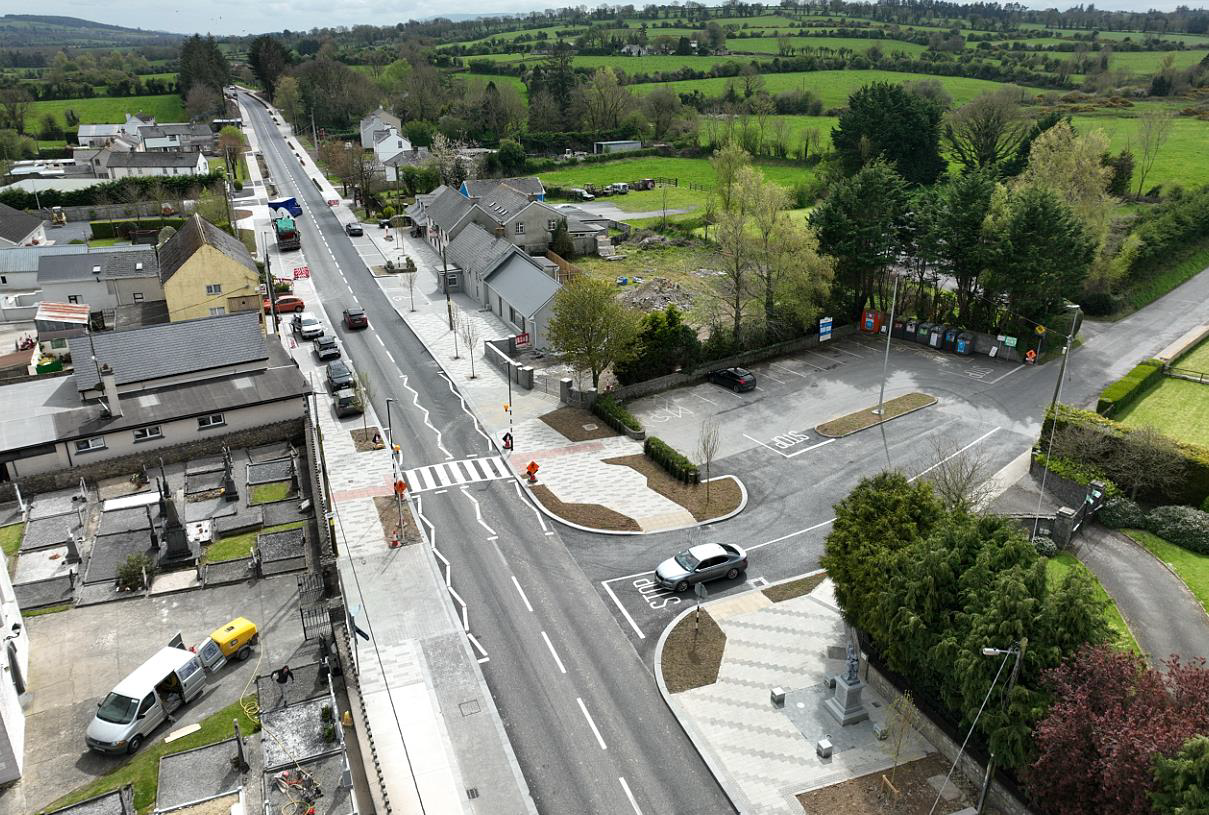National Roads Active Travel

TII is also conscious of the need to provide Active Travel (AT) facilities on, across or adjacent to the National Roads network, particularly in urban areas (built-up areas, villages, towns and cities).
This need is recognised in our strategy for the National Roads network, NR2040. Improvement of AT facilities in such areas, is seen as vital to developing a meaningful alternative for short distance (possibly sedentary) trips along the National Roads network; and potentially reducing the operational carbon footprint of the same in urban areas.
Movement along and across National Roads is seen as important; and is discussed in NR2040 under two of its key investment priorities: ‘Decarbonisation’ and ‘Movement of People and Goods in Urban Areas’.
Commitments Relevant to Active Travel
NR2040 also contains several commitments in this regard (all commitments are set out in Section 6 of the strategy), the commitments relevant to active travel are listed below:

- TII will promote inter-modal solutions that maximise overall transport efficiency in terms of infrastructure and resource use. For example, facilitating safe active travel along National Roads corridors that connect with rail and bus stations.

- TII will consider the needs of all road users for all projects. On urban dual carriageways and motorways approaching cities, we will work with partner agencies to enable public transport and high-quality active travel alternatives.
- Where bypasses are built, urban realm improvements will be required in the bypassed town to enable more sustainable mobility.

- TII recognises that busy urban motorways, ring roads and town bypasses can be hostile environments for pedestrians and cyclists wishing to cross. We will identify and remedy severance impacts from National Roads.
- TII will support the provision of segregated or offline active travel infrastructure adjacent to National Roads.
Any new project developed under the aegis of TII should have regard to these commitments. We are also proud to have recently funded well received schemes such as N59 Mulranny Footpaths, N76 Grangemockler, among several other recent safety and connectivity improvements. To that end, we are increasingly active in this area; and have recently been undertaking more extensive engagement with Local Authorities to identify locations and opportunities where further AT improvements can be made in built up areas.
Active Travel Schemes

N59 Mulranny Footpaths
Mulranny, Co. Mayo, is a rural village located on the N59 national road, part of the iconic Wild Atlantic Way. Mayo County Council, Mayo National Roads Office (NRO) and Transport Infrastructure Ireland identified the necessity for road safety improvements in the village. Subsequently, a Village Design Statement constituting a collaborative and participative approach to village design was developed.
The NRO worked collaboratively with community groups, landowners, planners and architects to deliver road safety and public realm improvements, resulting in the 'Mulranny Promenade'. The Mulranny Promenade, officially opened in 2015, incorporates footpaths, a cycleway (linking to the Great Western Greenway), bus facilities and high quality public space and is a primary example of delivering safety benefits to road users as well as benefits to sustainable transport and active travel modes.

N76 Grangemockler
Grangemockler, a charming village in County Tipperary, lies just 2 km southwest of Ninemilehouse along the N76. Recent enhancements to this section of the N76 include resurfacing the road, upgrading and widening the village footpaths, creating well-defined parking spaces, reducing the carriageway width to a consistent 6.5 metres to slow traffic, and redesigning all junctions and access points in Grangemockler.
The project also involved installing new pedestrian railings on the bridge over the River Lingaun, upgrading the drainage system for quicker surface water removal, improving pedestrian crossings, and adding tactile paving at key points.